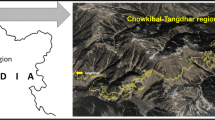Abstract
This paper presents the Juste-Neige system for predicting the snow height on the ski runs of a resort using a multi-agent simulation software. Its aim is to facilitate snow cover management in order to i) reduce the production cost of artificial snow and to improve the profit margin for the companies managing the ski resorts; and ii) to reduce the water and energy consumption, and thus to reduce the environmental impact, by producing only the snow needed for a good skiing experience. The software provides maps with the predicted snow heights for up to 13 days. On these maps, the areas most exposed to snow erosion are highlighted. The software proceeds in three steps: i) interpolation of snow height measurements with a neural network; ii) local meteorological forecasts for every ski resort; iii) simulation of the impact caused by skiers using a multi-agent system. The software has been evaluated in the Swiss ski resort of Verbier and provides useful predictions.
Access this chapter
Tax calculation will be finalised at checkout
Purchases are for personal use only
Preview
Unable to display preview. Download preview PDF.
Similar content being viewed by others
References
Brissaud, I.: Fractal distribution of Ski lifts and Ski slopes. Example of the Serre Chevalier resort, Cybergeo. European Journal of Geography, Systèmes, Modélisation, Géostatistiques, article 366 (2007)
Brown, R.D., Braaten, R.O.: Spatial and Temporal Variability of Canadian Monthly Snow Depths, 1946—1995. Atmosphere-Ocean 36(1), 37–54 (1998)
Dubosson, Y.: Etude sur les critères influençant le choix d’une piste de ski sur le domaine skiable de Verbier, Ecole Suisse de Tourisme, Sierre, 53 p (2009)
Elsasser, H., Bürki, R.: Climate change as a threat to tourism in the Alps. Clim. Res. 20, 253–257 (2002)
Kanevski, M., Pozdnoukhov, A., Timonin, V.: Machine learning for spatial environmental data, Theory, applications and software. EPFL and CRC Press (2009)
Knaffou, R.: Les Stations intégrées de sport d’hiver des Alpes françaises, Masson (1978)
OcCC. Klimaänderung und die Schweiz 2050. Erwartete Auswirkung auf Umwelt, Gesellschaft und Wirtschaft, Bern, p.168 S (2007)
Pinzer, B.R., Schneebeli, M.: Snow metamorphism under alternating temperature gradients: Morphology and recrystallization in surface snow, Geophysical Research Letters (2009)
Pullman, M.E., Thompson, G.M.: Evaluating capacity- and demand-management decisions at a ski resort: this model reveals some effective and not-so-effective way. Cornell Hotel & Restaurant Administration Quarterly (2002)
Reynolds, C.W.: Flocks, Herds and schools: A distributed behavioral model. Computer Graphics 21(4), 25–34 (1987)
Scott, D., McBoyle, G., Mills, B.: Climate change and the skiing industry in southern Ontario (Canada): exploring the importance of snowmaking as a technical adaptation. Clim. Res. 23, 171–181 (2003)
Timonin, V., Kanevski, M., Loubier, J.-C., Doctor, M.: Analysis and modeling of snow depth patterns in Alpine ski resorts. In: Proceedings of the 16th European Colloquium on Theoretical and Quantitative Geography, Maynooth, Ireland, September 4 - 8 (2009)
Vermeir, K.: le risque sur les domaines skiables alpins. Analyse des représentations sociales des pratiquants. Thèse de géographie (2008), http://tel.archives-ouvertes.fr/tel-00322735/fr/oai:tel.archives-ouvertes.fr:tel-00322735
Author information
Authors and Affiliations
Editor information
Editors and Affiliations
Rights and permissions
Copyright information
© 2011 Springer-Verlag Berlin Heidelberg
About this paper
Cite this paper
Revilloud, M., Loubier, J.C., Doctor, M., Kanevski, M., Timonin, V., Schumacher, M. (2011). Artificial Snow Optimization in Winter Sport Destinations Using a Multi-agent Simulation. In: Demazeau, Y., Pěchoucěk, M., Corchado, J.M., Pérez, J.B. (eds) Advances on Practical Applications of Agents and Multiagent Systems. Advances in Intelligent and Soft Computing, vol 88. Springer, Berlin, Heidelberg. https://doi.org/10.1007/978-3-642-19875-5_26
Download citation
DOI: https://doi.org/10.1007/978-3-642-19875-5_26
Publisher Name: Springer, Berlin, Heidelberg
Print ISBN: 978-3-642-19874-8
Online ISBN: 978-3-642-19875-5
eBook Packages: EngineeringEngineering (R0)




